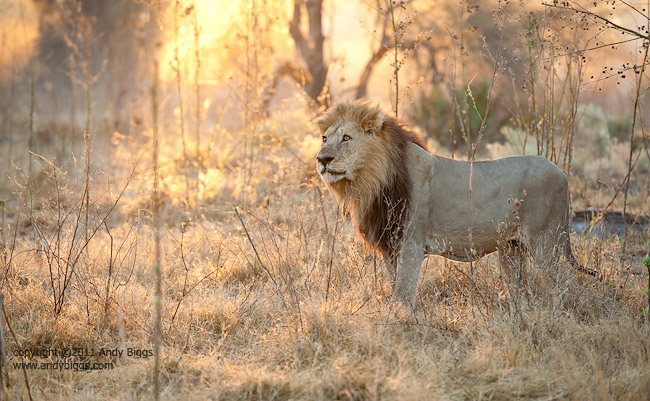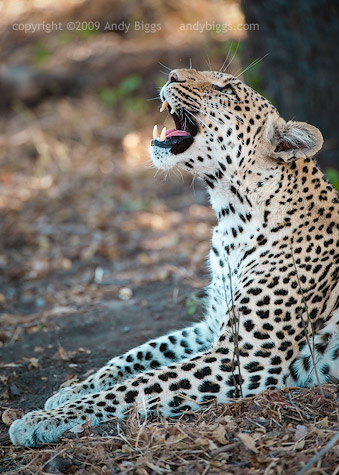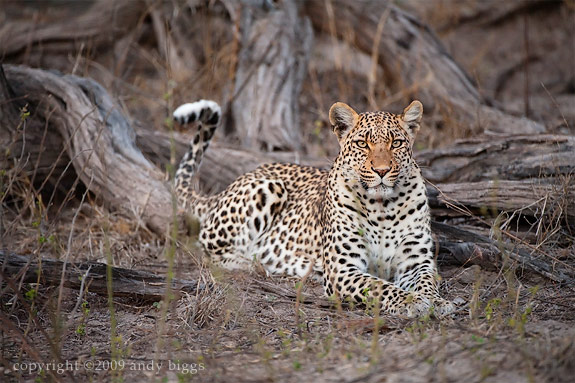Photo of the Day - Lion at Mombo
 Tuesday, January 17, 2012 at 09:53AM
Tuesday, January 17, 2012 at 09:53AM

Lion, near Mombo Camp, Okavango Delta, Botswana. July 2011
Nikon D3, 70-200mm f/2.8 VRII, 1/800 sec @ f/3.5, ISO 1600
I am an avid adventurer, conservationist, teacher, and outdoor photographer whose photography celebrates the African landscape and its rich wildlife, people, and culture. My photographic safaris allow my travelers to not only enhance their understanding of photography, lighting, and wildlife, but to develop a life-long admiration for Africa ‘s beauty and culture.
Banana Republic recently used my photographs as the cornerstone of their Urban Safari campaign, and my images were seen in all 750 stores around the globe, as well as in their billboards, catalogs and annual report. I was also the winner of the BBC Wildlife Photographer of the Year in the ‘Wild Places’ category in 2008 and a highly commended in the ‘Creative Visions of Nature’ category in 2007.
I launched Gura Gear in 2008, in an attempt to deliver lightweight camera bags to the market. I was looking for a lightweight camera bag to hold all of my photographic gear, and there was nothing desirable on the market that suited my needs. After spending 2 years with many prototypes, the Gura Gear Kiboko bag was born. More products are now available on the Gura Gear web site.
 Tuesday, January 17, 2012 at 09:53AM
Tuesday, January 17, 2012 at 09:53AM

Lion, near Mombo Camp, Okavango Delta, Botswana. July 2011
Nikon D3, 70-200mm f/2.8 VRII, 1/800 sec @ f/3.5, ISO 1600
 Tuesday, October 4, 2011 at 02:36PM
Tuesday, October 4, 2011 at 02:36PM

Legadema
Mombo Camp, Botswana. July 2011
Nikon D3x, 200-400mm f/4 VR, 1/640 @ f/4, ISO 800
 Botswana,
Botswana,  Legadema,
Legadema,  Mombo,
Mombo,  Okavango Delta in
Okavango Delta in  Photo of the Day
Photo of the Day  Monday, December 6, 2010 at 03:43PM
Monday, December 6, 2010 at 03:43PM I use many different safari outfitters throughout Africa, as well as other providers that help me in different areas of my business, and one of the most reliable organizations I work with is Wilderness Safaris. Their camps are always top notch, and their professionalism both at the camps and in the home office always exceeds expectations. It is no surprise that Mombo Camp and Little Mombo Camp in Botswana’s Okavango Delta are yet again the Number 1 Resort in Africa in the 2010 Condé Nast Traveler (USA) Readers’ Choice Awards.
Aside from Mombo’s chart-topping achievement, a number of other Wilderness Safaris camps were prominent in the Top Resorts in Africa: Other camps in Botswana that were rated highly by readers of the magazine were the Okavango camps of Jao Camp (at eighth place) and Vumbura Plains, and the Linyanti camps of DumaTau and Savuti. Namibian camps that featured in Top African Resorts included the Kulala and Ongava camps at Sossusvlei and Etosha respectively.
Destinations were rated on the following criteria: Activities/facilities, food/dining, location, overall design, rooms, and service - all of which Mombo performed almost perfectly according to the readers of Condé Nast! As the magazine states: “Africa at its finest, this camp on the edge of a floodplain has a perfect-scoring location so exquisite, a movie set couldn’t replicate it.”
Most of the camps listed above are camps that I visit on my photographic safaris with my customers. I always frequent properties that me and my business look good, and a huge congratulations goes out to my friends at Wilderness Safaris for this very exciting award. You guys deserve it.
 Friday, September 4, 2009 at 09:33AM
Friday, September 4, 2009 at 09:33AM

Legadema
Mombo Camp, Botswana. July 2009
Nikon D3, 200-400mm f/4 VR, 1/200sec @ f/4, ISO 12,800
I know, I have been inundating this blog with photos of Legadema lately, however I thought this image would be an interesting study because of the technical details of the image. Did you notice that it was captured at ISO 12,800? Yes, this is a bit extreme, but the sun had gone down 15 minutes earlier, and rather than go back to camp we sat and enjoyed her company for a little while longer. I used Noise Ninja to clean up the noise a tad, and I used Nik Software's Viveza to brighten her up and have her more visually separated from the backgroud.
Photographing a leopard is likely some of the most challenging situations in wildlife photography. You either have one in a tree with extreme light/dark contrast, or you have one on the ground with grass and twigs in the way. Nature is inherently messy, and it is our job as photographers to try and eliminate the clutter by using our shooting position and our focal length to try and isolate our subjects.
As a rule of thumb, I like to instruct my safari travelers by rating items that show up in a scene. You can think of each item in your viewfinder as being positive, neutral or negative. Eliminate the negatives, get as many positives as you can, and neutrals are just going to be there. The branch that is coming out of her head is a negative, however you can reduce it somewhat by using visual tricks to get a viewer's eye to not notice it as much. In this example I brightened her up and darkened the background, as to give visual preference to one thing over another.
Trick: make your subject brighter than the background, as brighter objects tend to attract a viewer's eye. This is why lions sitting in the shade, underneath a tree with a bright background generally isn't a very successful photograph. Wait until your subject has a clean background that is also darker than your subject, and you have instantly created a luminance contrast that is in your favor.
Trick: try to find your subject in a different hue than the background, and you now have a case of hue contrast. In the image above the reflected light in the background (and on the subject) has blue-ish, and the subjects bright yellow coat (even though it is in cool shadow light) is warm. Now you have a warm / blue hue contrast that also helps separate the background from the subject.
 Botswana,
Botswana,  Mombo,
Mombo,  Technique,
Technique,  africa,
africa,  safari in
safari in  Photo of the Day,
Photo of the Day,  Techniques
Techniques  Thursday, September 3, 2009 at 01:54PM
Thursday, September 3, 2009 at 01:54PM 
Legadema
Mombo Camp, Botswana. July 2009
Nikon D3, 200-400mm f/4 VR, 1/400sec @ f/4, ISO 2000
 Botswana,
Botswana,  Mombo,
Mombo,  africa,
africa,  safari in
safari in  Photo of the Day
Photo of the Day  Thursday, August 27, 2009 at 02:59PM
Thursday, August 27, 2009 at 02:59PM

Legadema
Mombo Camp, Okavango Delta, Botswana. July 2009
Nikon D3, 200-400mm f/4 VR, 1/160 @ f/4, ISO 6400
 Boswana,
Boswana,  Legadema,
Legadema,  Mombo,
Mombo,  Okavango Delta,
Okavango Delta,  africa,
africa,  safari in
safari in  Photo of the Day
Photo of the Day